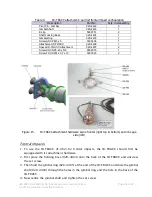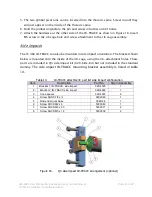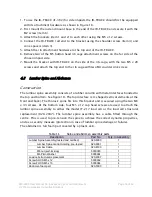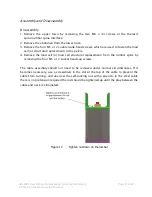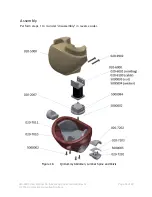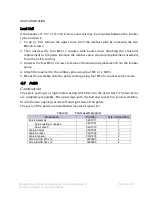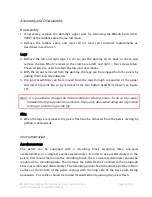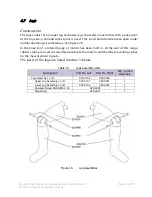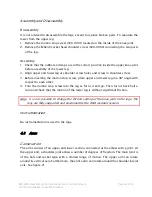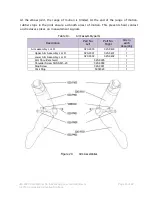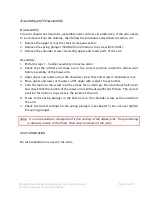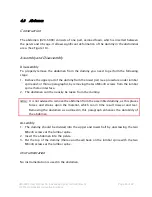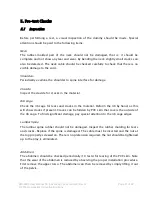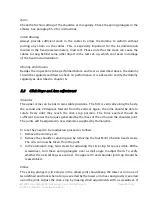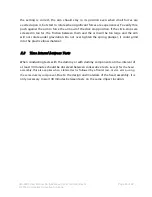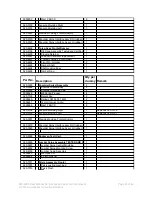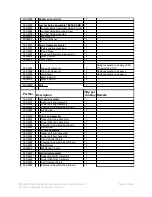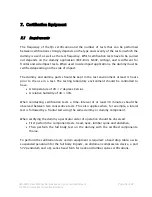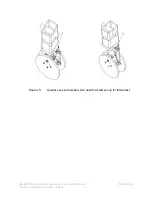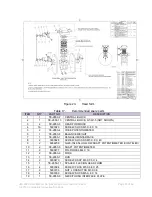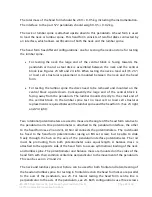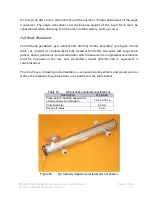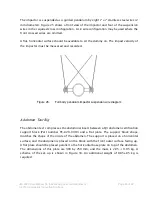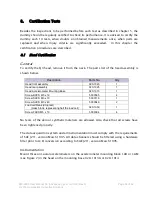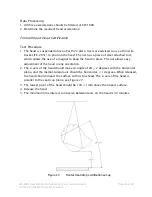
020-9905 User Manual Q3 (Advanced 3 year old child) Rev G Page 48 of 82
© 2016 Humanetics Innovative Solutions
Arms
Check the friction setting of the shoulder-arm regularly. Check the spring plungers in the
elbows. See paragraph 5.2 for instructions.
Cable Routing
Always provide sufficient slack in the cables to allow the dummy to deform without
putting any strain on the cables. This is especially important for the instrumentation
located in the head (accelerometers, load cell). Please note that the slack can cause the
cables to snag behind some other object in the test set-up, which can result in damage
of the head instrumentation.
Dummy Certification
Besides the inspections to be performed before each test as described above, the dummy
should be regularly certified to check its performance. It is advised to certify the dummy
regularly as described in chapter 8.
5.2 Click Stops and Arm adjustment
Shoulder
The upper arms can be put in two stable positions. The first is vertically along the body,
the second one 20 degrees forward from the vertical. Again, the arms should be able to
rotate freely until they reach the click-stop position. The force exerted should be
sufficient to resist the torques generated by the mass of the arm upon the shoulder joint.
The joints will be adjusted in new dummies supplied by Humanetics.
In case they need to be readjusted proceed as follows:
1.
Remove the dummy suit.
2.
Remove the shoulder-retaining cap by removing the four M4x12 button head screws.
The arm can now be taken from the joint.
3.
In the aluminum ring, two screws for adjusting the click stop force are visible. With a
screwdriver, turn these spring plungers over a small angle to adjust them. To verify
whether the new settings are correct, the upper arm and shoulder joint cap should be
reassembled.
Elbow
The spring plungers (click stops) in the elbow joint should keep the lower arm in one of
two defined positions when a torque exerted by the lower arm mass and gravity is exerted
upon the joint. Adjust the click-stop by making small adjustments with a screwdriver. If

